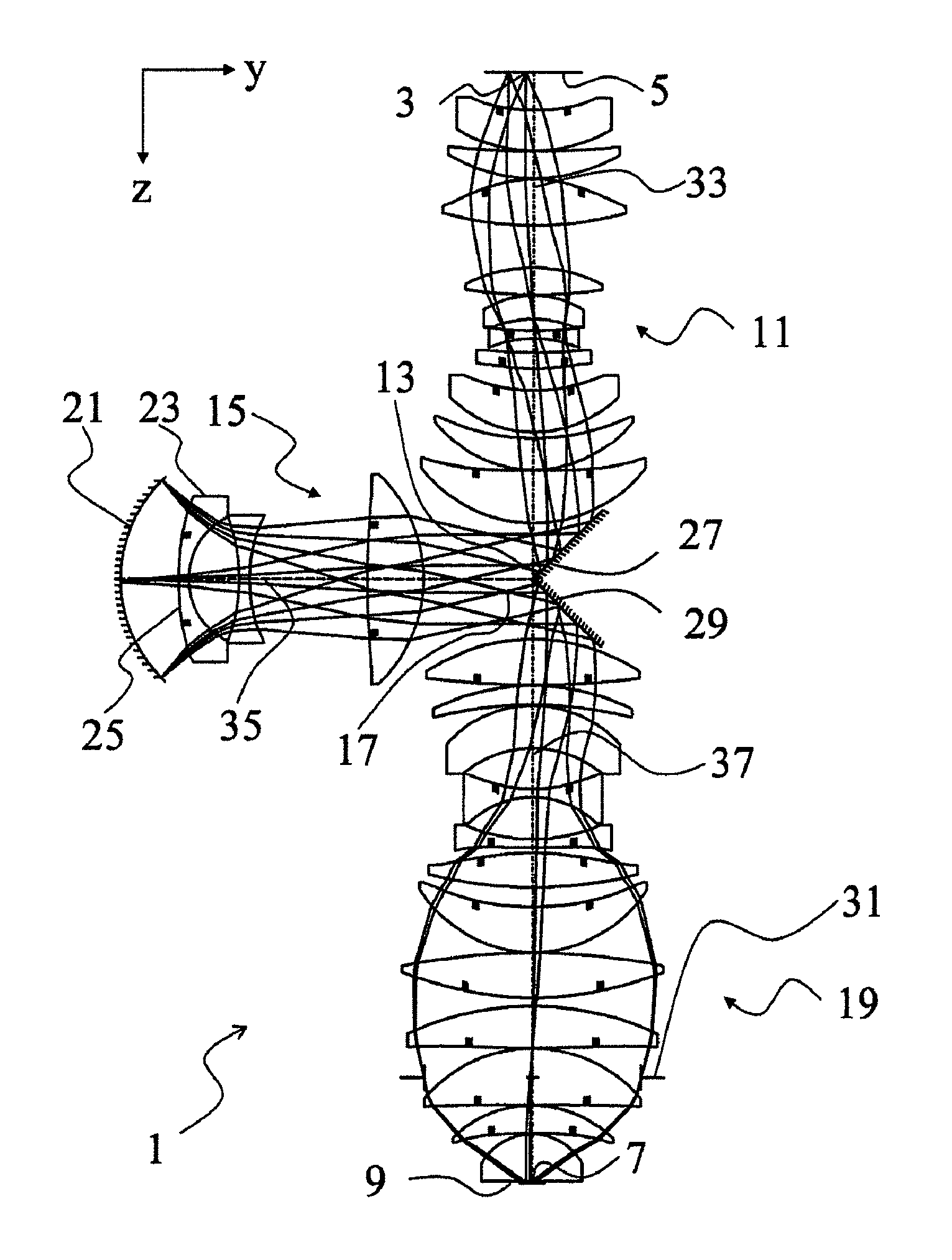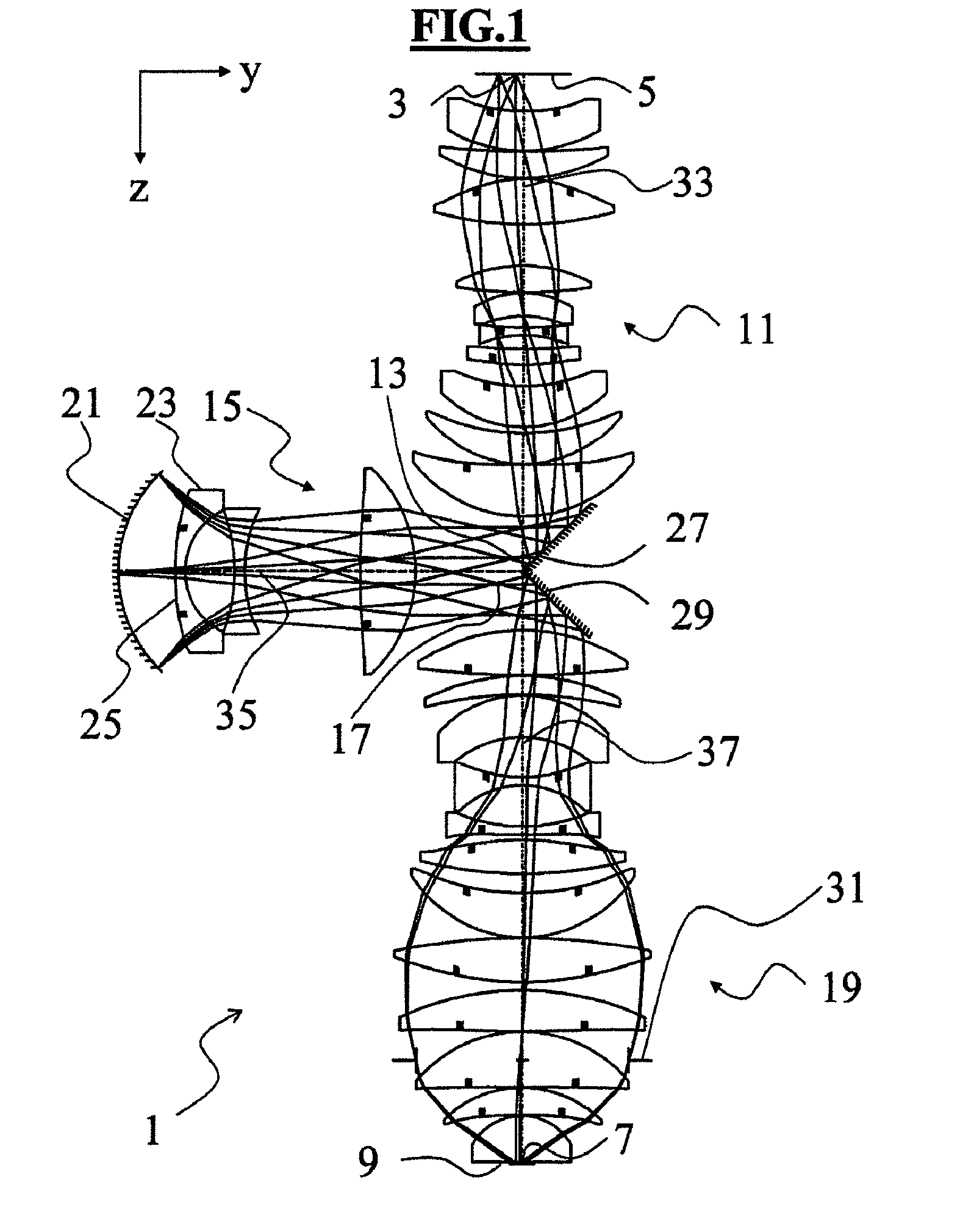Catadioptric projection objective
a technology of catadioptric projection and objective, which is applied in the field of catadioptric projection objective for microlithography, can solve the problems of increasing the local radiation load of the lens arranged in the vicinity, increasing the resolution, and typical lens materials such as quartz or calcium fluoride, for example, showing damage due to irradiation, etc., and achieving increased resolution, increased throughput, and greater damage
- Summary
- Abstract
- Description
- Claims
- Application Information
AI Technical Summary
Benefits of technology
Problems solved by technology
Method used
Image
Examples
Embodiment Construction
[0067]FIG. 1 shows a lens section of a catadioptric projection objective 1. The optical data for the projection objective 1 are compiled in Table 1. The lens materials used are, in all the lenses apart from the lens adjacent to the image plane, quartz (SiO2), having a refractive index of n=1.5603261 at a wavelength of 193.306 nm and, in the lens adjacent to the image plane, spinel (MgAl2O4) having a refractive index of n=1.91 at a wavelength of 193.306 nm. The aspherical surfaces can be described by the following sagitta formula:
[0068]p(h)=1Rh21+1-(1+K)(1R)2h2+∑k=1Ckh2k+2
[0069]In this case, p represents the axial distance in [mm] of the aspherical surface from a plane—perpendicular to the optical axis—through the vertex of the aspherical surface in the case of the radial distance h in [mm], R represents the vertex radius in [mm], K represents the conical constant and Ck represents the individual aspherical constants of the order k in
[0070]
TABLE 2Aperture rayxf [mm]yf [mm]xpy...
PUM
 Login to view more
Login to view more Abstract
Description
Claims
Application Information
 Login to view more
Login to view more - R&D Engineer
- R&D Manager
- IP Professional
- Industry Leading Data Capabilities
- Powerful AI technology
- Patent DNA Extraction
Browse by: Latest US Patents, China's latest patents, Technical Efficacy Thesaurus, Application Domain, Technology Topic.
© 2024 PatSnap. All rights reserved.Legal|Privacy policy|Modern Slavery Act Transparency Statement|Sitemap



